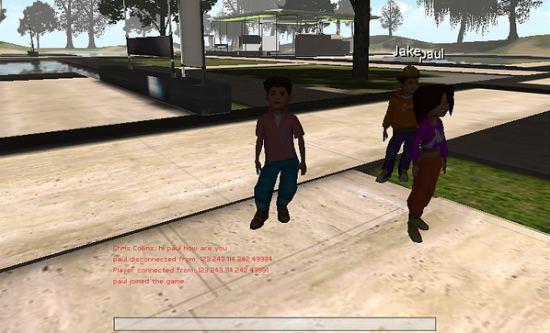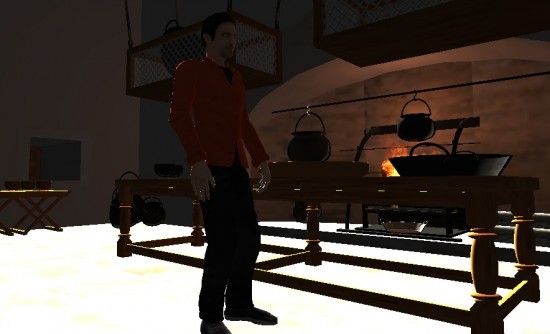Unity 3D is currently the hot platform for virtual world development and it’s going to get hotter, experts say, now that Unity has announced that their environments will soon be exportable to Flash.

The announcement will “100 percent accelerate” the move to Unity, Tipodean CEO Chris Collins told Hypergrid Business. Collins was previously general manager of the enterprise division at Linden Lab. His new company makes the BuiltBuyMe Unity 3D-based viewer for OpenSim and Second Life, as well as a tool to convert OpenSim regions to fully mesh-based Unity 3D regions.
“It is great, and is just another reason that we like Unity 3D,” he said. “You have increased deployment options to get your world out in different formats. Build once — deploy to multiple formats.”
For example, Tipodean has a converted OpenSim demo island running “peer to peer” — no server necessary, even for multiple simultaneous visitors, using Flash for voice.

“This will probably export to Flash,” Collins said. “It is massively scalable.”
These island are small, self-contained environments that don’t interact with a back-end server for complex virtual world functionality — in-world visitors can’t change anything inside the world, for example.
When Unity 3D is used simply as a front-end viewer for complex worlds, things could get more complicated. That’s the case whether the world servers are running OpenSim, or proprietary, Unity 3D-friendly platforms like ReactionGrid’s Jibe or SecondPlaces’ Unifier.

“It will take us a little while before we’re ready to support it, from what I read so far,” ReactionGrid CTO Chris Hart told Hypergrid Business. “There are limitations to running in Flash, notably that you lose some of the .NET functionality that we rely on currently.”
For example, Jibe uses .NET for networking, she said, using the Photon or SmartFox servers — but both of these have Flash interfaces.
“I will be investigating those for handling network traffic,” she said, “Which, if successful, would then open up Jibe to Flash-only deployments.”
“It’s very much up in the air until the official release of Flash support from Unity, but we will definitely be investigating this soon after they release,” she added.

ReactionGrid’s chief competitor in the Unity 3D virtual world space is Second Places’ Unifier, but Mark Duffy, the company’s managing director, said that his product should work well when exported.
“Initial testing is that our scripts and MMO [massively multiplayer online] service will not be affected by compiling as Flash,” Duffy told Hypergrid Business.
Duffy said he and his team will be in San Francisco for the Unite ’11 later this month, and will know more in two weeks.

So what difference does it make if a virtual world viewer runs in Unity 3D or Flash? They’re both browser-based, and both require that users install a plugin.
The difference is that Flash is installed on 99 percent of all computers (98 percent in emerging markets). The Unity player has been downloaded more than 74 million times — but that’s less than 4 percent of the world’s 2 billion Internet users.
This means that if you’re holding an event in a virtual world, and send folks to a Unity 3D destinations, chances are that they’ll have to download and install a new plugin — and plenty of people aren’t going to want to do that. But if you send them to a Flash page, Â they can just sit back and enjoy the view.
Another option is to create a Java-based viewer, which requires that users have the Java Runtime Environment installed. This is the approach taken by Altadyn’s 3DXplorer. According to RIA Stats, only 65 percent of computers have Java installed.
Eventually, 3D graphics support will be incorporated right into the basic Web browser, via HTML 5 and OpenGL standards. But, until then, Flash is the big game in town.
- International singers gather on Alternate Metaverse Grid for first annual International Day - April 15, 2024
- OpenSim hits new land, user highs - April 15, 2024
- Wolf Territories rolls out speech-to-text to help the hearing impaired - April 15, 2024
